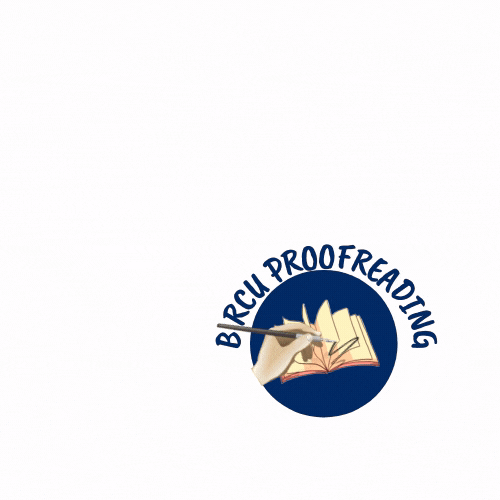Interactive Control System Evaluation of Sekolah Dasar Pelangi in Responding Strategic Uncertainties of COVID-19
Abstract
Sekolah Dasar Pelangi responded to instructions from the Government regarding increasing vigilance against the spread of COVID-19 as strategic uncertainties that could potentially thwart the implementation of the intended strategy, namely Project Based Learning. This study was aimed at evaluating the application of an interactive control system in the process of formulating a new emergent strategy for Sekolah Dasar Pelangiduring the COVID-19 pandemic. The approach used is a case study and qualitative research where the data will be obtained through in-depth interviews with the Institutional Management and the Principal of Sekolah Dasar Pelangi. Based on the results of the analysis, it is concluded that the process of formulating a new emergent strategy for Sekolah Dasar Pelangi uses an interactive control system at the initial stage of strategy formulation and evaluation of strategy implementation. A control system that focused on teaching infrastructure and teacher teaching skills is determined. Interactive meetings discuss data collected from the control system which is the focus of Sekolah Dasar Pelangi's strategic uncertainties and are used interactively. In the debates and dialogues, data on the development of the use of teaching infrastructure and the teaching skills of teachers became the focus of discussion and debate. The result of the debate and dialogue on the formulation of the new emergent learning strategy for Sekolah Dasar Pelangi is a learning strategy called Home Learning while still prioritizing the Project Based Learning learning design. At the evaluation stage, the interactive control system focus remains while in the debates and dialogues, survey data from parents and students were added after the implementation of the Home Learning learning strategy trial. The result is a new emergent strategy, namely Home Learning learning with a Project Based Learning design combined with pedagogical intelligence, social emotional, and enrichment.
COVID-19; strategic uncertainties; interactive control system; debate and dialogue; intended strategy
Keywords
Full Text:
PDFReferences
Adler, P. and Chen, C. (2011). Combining creativity and control: understanding individual motivation in large-scale collaborative creativity. Accounting, Organizations and Society, Vol. 36, 63-85.
Bara, A., et.al. (2021). The Effectiveness of Advertising Marketing in Print Media during the Covid 19 Pandemic in the Mandailing Natal Region. Budapest International Research and Critics Institute-Journal (BIRCI-Journal) Vol 4 (1): 879-886.
Basuki , S. (2010). Metode Penelitian. Mc.Graw Hill Education.
Blocher J., et.al (2019). Cost Management:A Strategig Emphasis. Mc.Graw Hill Education.
Ferreira, A. and Otley, D. (2009). The design and use of performance management systems: an extended framework for analysis. Management Accounting Research, Vol. 20 No. 4, 263-282.
Humas Ditjen Dikti Kementerian Pendidikan dan Kebudayaan. (2020). Tantangan Dunia Pendidikan di Masa Pandemi. 28 Oktober 2020.
Kementerian Pendidikan dan Kebudayaan (2020). Surat Edaran Menteri Pendidikan dan Kebudayaan No. 3/2020 tentang Pencegahan COVID-19.
Jakarta: Kementerian Pendidikan dan Kebudayaan Republik Indonesia
Lorenzo, L. (1993). Managing Uncertainty:Thinking and Planning Strategically. Wiley Online Library,Vol.1993, Issue 84.
Ningrum, P.A., Hukom, A., and Adiwijaya, S. (2020). The Potential of Poverty in the City of Palangka Raya: Study SMIs Affected Pandemic Covid 19. Budapest International Research and Critics Institute-Journal (BIRCI-Journal) Vol 3 (3): 1626-1634.
Porter & Kramer (2006). Strategy and Society: The link between Competitive Advantages and Corporate Social Responsibility. Harvard Business Review.
Sihombing, E.H., and Nasib. (2020). The Decision of Choosing Course in the Era of Covid 19 through the Telemarketing Program, Personal Selling and College Image. Budapest International Research and Critics Institute-Journal (BIRCI-Journal) Vol 3 (4): 2843-2850.
Simons (2007). A Balancing Acs Tensions to be Managed. Harvard Business School Press.
Simons (2007). Beliefs and Boundaries: Framing the Strategic Domain. Harvard Business School Press.
Simons (2007). Interactive Control Systems: Adapting to Competitive Environments. Harvard Business School Press.
Simons (2014). Performance Measurement and Control System for Implementing Strategy. Pearson Education Limited.
Simons (2014). The Control Levers in Action: Controlling Business Strategy.
Pearson Education Limited.
Sugiyono, Prof. (2013). Metode Penelitian Kuantitatif, Kuantitatif, dan R & D. Penerbit Alfabeta Bandung.
Thompson et.al (2020). Crafting and Executing Strategy. Mc.Graw Hill Education.
Van der Stede, W.A. (2001). “Measuring ‘tight budgetary control’”. Management Accounting Research, Vol. 12 No. 1, pp. 119-139.
Yaakob, M et al. (2019). Strategic Management and Strategic Planning in School: Is it worth of teachers? Academy of Strategic Management Journal, Vol.18, Issue 3.
Yin, R. K. (1984). Case study research: Design and methods. Newbury Park, CA: Sage.
Zona, MA, Megawati, Maulana, A., (2018). Antecedents of employee organizational commitment at public sector organizationa in west Sumatra. Advances in Economics, Business and Management Research. Vol. 57
DOI: https://doi.org/10.33258/birci.v5i3.6014
Article Metrics
Abstract view : 25 timesPDF - 13 times
Refbacks
- There are currently no refbacks.

This work is licensed under a Creative Commons Attribution-ShareAlike 4.0 International License.

This work is licensed under a Creative Commons Attribution-ShareAlike 4.0 International License.

_.gif)

















_.gif)



